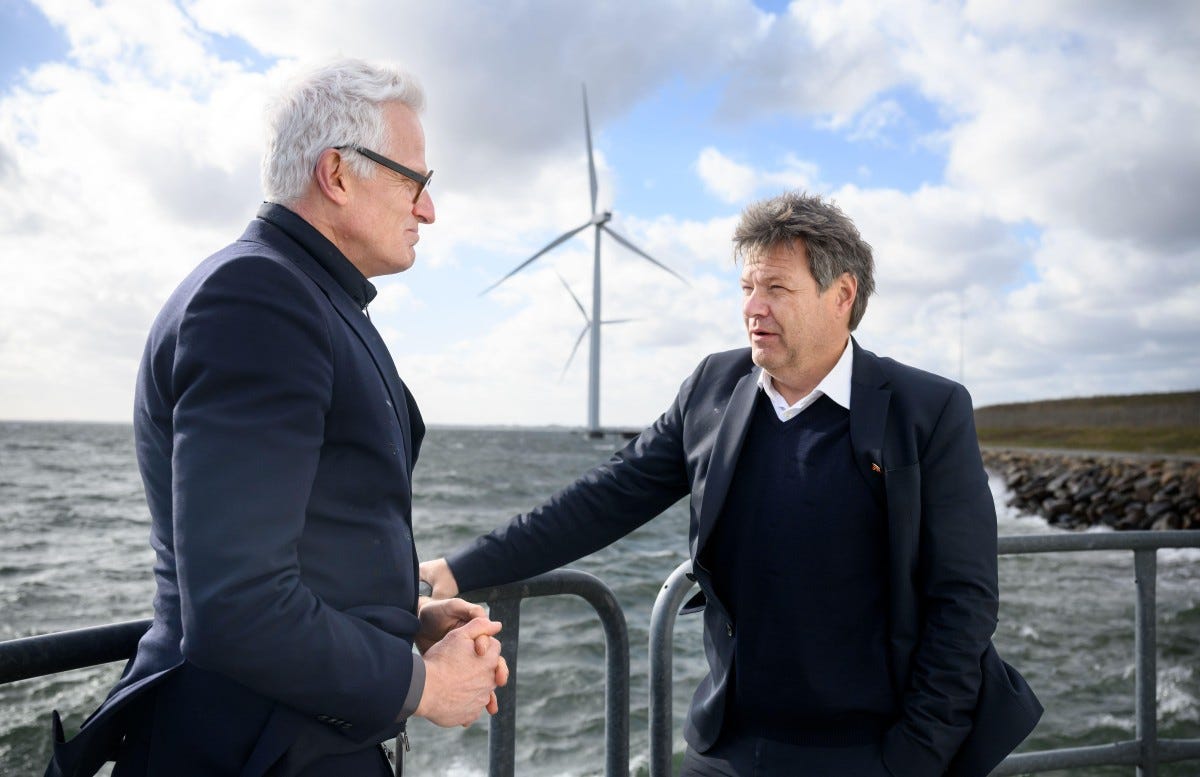Oil giants are learning that it ain't easy being green
Expertise in offshore oil production has not translated into profitable offshore wind.

So farewell then, Mads Nipper, as Private Eye’s EJ Thribb might say. Farewell too, in all probability, at least one of the top honchos at BP, the also-ran among the world’s big oil companies. Mr Nipper gave greenery his best shot, but now he has been fired, as the shareholders in Orsted, the company he ran, view the wreckage of their investment.
Under Mr Nipper, Orsted bet that the future was windmills, and at the peak of enthusiasm for renewables in December 2020, the shares had quadrupled in three years, valuing the business at £50 billion. BP never attracted the same zeal with its attempt to go Beyond Petroleum, but both have learned that it ain’t easy being green.
Orsted went all-in on offshore windmills, which turn out to be unsuitable for running a modern economy, as so many have warned for so long. Since their peak, Orsted shares have lost three-quarters of their value. According to the ever on-message Financial Times, this is down to “management mis-steps and a challenging economic backdrop.”
Much the same could be said of BP, which, even without the Gulf of Mexico well disaster, would be struggling. Expertise in offshore oil production has not translated into profitable offshore wind. Both BP and Shell are cutting back, recognising that the transition to new energy works better when the capital is returned to shareholders through the market than when spent by virtue-signalling companies.
Underlying all this is the realisation that power from renewables is never going to be cheap, and is a long, long way from replacing coal, oil and gas. World production of all three hit new highs last year. Even before Donald Trump, Orsted admitted defeat with a wind farm offshore New Jersey, writing off a $4bn investment. Things are almost as grim in the UK North Sea, where subsidies had to be sharply increased following the failure of a single bid for new wind acreage in 2023.
It’s now obvious to all but Ed Milliband that the Net Zero target enshrined in law cannot be met without further impoverishing UK consumers and, importantly for growth hunters, UK manufacturing. Far from saving consumers money, the windmills need constant subsidies and back-up, leading to industrial electricity prices four times those paid in the United States.
The attempt to square this circle is nowhere better illustrated than with Drax, owner of what was once Britain’s biggest coal-fired power station. This company’s business model is almost beyond parody: it turns forests into wood pellets, ships them across the Atlantic, stores them in special warehouses (lest they spontaneously combust) and then burns them to produce electricity.
To keep this farago going, the UK government has just extended its subsidy regime with another £2bn. Everyone involved pretends this is green energy, and lest these subsidies ever run out, Drax is asking for new ones for carbon capture and storage, that thermodynamic equivalent of trying to pull yourself up by your own bootstraps.
Drax is merely a symbol of extend and pretend that has dogged UK energy policy ever since the Climate Change Act was bundled through parliament with no thought of how to do it or how much it would cost, with only a tiny handful of objectors, 15 years ago. It could end up being the single most expensive policy mistake any government has ever made.


